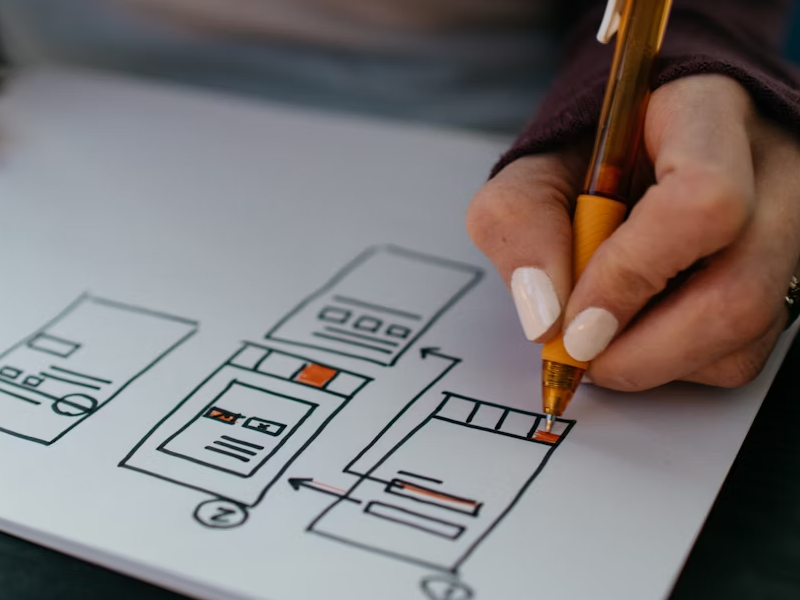As humans, we tend to interpret things and events based on the peak moments that we experienced and their endings. Whether positive or negative, they can shape our whole perspective.
For example, let’s say you are asked how your holiday was. Your answer will be influenced by the key moments that had a powerful impact on you. If you enjoyed beautiful beaches, you’ll say it was great. But if your wallet was stolen, you’ll most probably refer to it as stressful.
The peak-end theory refers exactly to this tendency of evaluating events based on the peak moments and their ending. This principle has its roots in behavioral economics, but as UX designers, of course, we wonder: How can we take advantage of it?
User experience is the overall feeling and satisfaction a person has when interacting with a product, service, or system. This can be shaped by smaller, more emotional aspects like the sense of control, trust, delight, or even frustration that arise during the interaction. It’s about the playful microcopy, the connection, the vibe, the spark, or the rage-quit.
So, the peak-end rule should be integrated into our UX laws to make sure people will have satisfying and memorable moments when engaging with our website. Nail the UX, and they won’t just use it. They’ll remember it!
Positive Peaks
Let’s say you’re applying for jobs through a career platform. You’ve refined your resume to the last detail, filled in lots of fields, and answered a few long and draining questions. Just before you hit “submit”
Imagine using a budgeting app. You’ve been tracking every expense you had, from coffees to a Netflix subscription, and saved as much money as you could. Then, just when it’s time to check your monthly savings goal, the app drops a celebration animation, and a message appears: “Look how far you’ve come! That holiday is right around the corner.”
This unexpected action not just rewards the effort, but it turns a financial task into a satisfying moment that sticks.
Negative Peaks
You’ve been filling out a long online form, and you are finally ready to submit. But when you click “Next”, the page reloads with an error: “Something went wrong”. You want to fix it, but there is no guidance.
That kind of frustration at a peak moment can undo all the effort the user put in, and it's probably the only thing they’ll remember.
40% OFF
Only this December
Upgrade to UI PRO version of Uinkits Systems to unlock 23.000 UI components.
Use the code "DEC40"
Endings
Goodbyes are the hardest. This is the moment to give your best to be remembered.
Let’s say you just finished an online workout in a fitness app. At the end, the screen lights up with an animation, vibrant music, and a message pops up: “You rock! You’re stronger than you were 20 minutes ago!”
This energetic ending sets an encouraging tone and will make the user aware of and content with your guidance.
How to Use the Peak-end Rule in UX design?
Here’s what you need to do to make the peak-end rule part of your UX laws:
1. Find potential peak moments.
Pay attention to your user journey maps and identify the key moments that might be transformed into peak ones. Think of what could make those moments delight your users and make them remember you. Maybe it would be suited to add a feature reveal or a progress message.
The best examples here are gamified learning apps. The most creative learning apps know the importance of experience points for completing lessons or answering quizzes. Levels or progress bars also make the best out of peak moments, as well as digital rewards for completing a milestone: badges and trophies.
2. End in a memorable way.
Be mindful about how each interaction ends. Make sure it leaves users satisfied and feeling they’ve made progress. You can get creative with your final messages and even put a smile on their face.
When users go through difficult steps, for example, filling out a long form with lots of steps, you should be mindful and empathetic, and congratulate them for the effort they just put in.
3. Test and refine.
Check web metrics and user feedback to ensure those peaks and ends are doing their job and enhancing the user experience.
To identify negative peaks to fix, ask your users what was the hardest or inconvenient part of their interaction with your website or app. They will help you find them and remove them, or even turn them into positive peaks.
Creativity in Managing Negative Peaks
Nobody wants to have broken links and 404 errors, but from time to time, it happens to everybody. Often, pages get moved, and users reach a dead end.
You can take advantage of this situation to show off your brand’s personality and creativity in your 404 error page ux design. While acknowledging that things are not in the right place, you can also make people think you are witty and your sense of humour is sharp!
Peak-end rule reminds us that people don’t remember experiences as a sum of every moment. They remember the emotional high points and how things ended. For UX design, that means focusing not just on consistency, but on creating standout moments and strong finishes.
Whether it is a delightful animation, a gesture of care, or an energetic checkout, these peaks and endings define how users feel about the entire experience. So, if you want your design to make a lasting impression, delight users in key moments!
Hurry up and make the peak-end rule part of your UX laws.
uinkits – Our Figma Design System and UI Kits
We at uinkits understand the importance of great user experiences and creating amazing UI designs. That’s why we’ve developed a Figma UI Kit with design components that include these essential UI elements that enable you to design intuitive and user-friendly interfaces effortlessly.
“You press the button, we do the rest.” – Kodak.
Inspired by this iconic tagline from Kodak, we believe in simplifying the design process for you. Our Figma UI Kit, uinkits, is a complete design system with UI components that allows you, as a UI UX designer, to create your products as quickly as pressing a button.
Our design system includes UI components, icons, variables, cards, buttons and everything you need for your design process. All you have to do is take your UI design component needed, and you’re ready to use it in your designs!
By
Cristi Fonea
•
June 19, 2025








